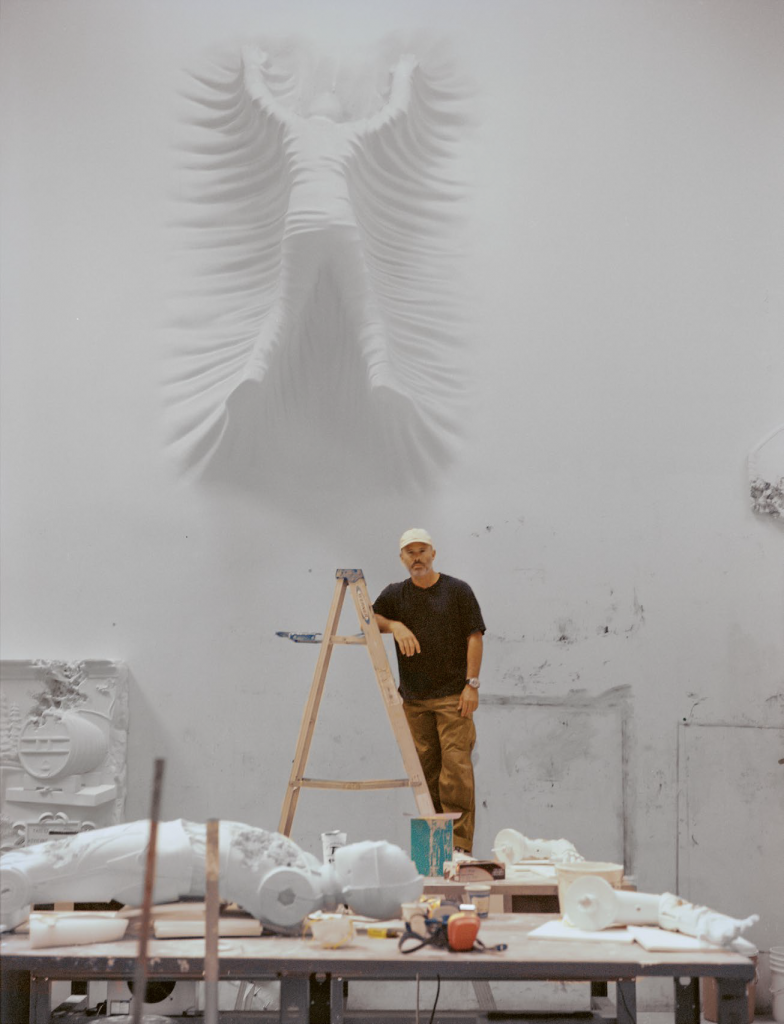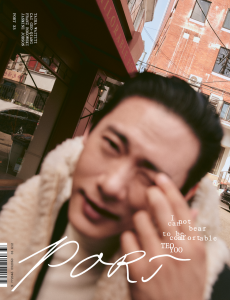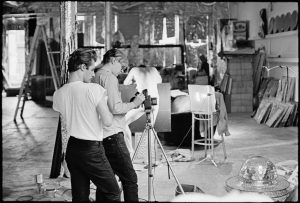Exploring the artistic alchemy of Daniel Arsham

In the realm of contemporary art, where innovation and bravery collide, one name emerges with an irrefutable resonance – Daniel Arsham. An enchanter of temporal dimensions, Arsham has spent the past 20 years transforming cultural objects into eroding artefacts, producing works that could both be plucked from ancient history or from an unfathomable day far, far ahead in a dystopian future.
Much like an alchemist of antiquity, Arsham’s creations sit in what he coins an “archaeological universe” – a civilisation that banishes the clock and is populated by ageless fictional artefacts. Spanning multiple disciplines from sculpture to painting, Arsham’s practice can therefore be likened to an orchestrated symphony that dances on the delicate thread of time. To celebrate Arsham’s momentous career and a two-decade collaboration with gallerist Emmanuel Perrotin, the artist is opening two solo exhibitions taking place simultaneously in Perrotin’s spaces in Paris and New York this September. Debuting multiple series of works inspired by his archive – a project with Star Wars, sketches etched into hotel stationery and updated versions of his antiquity sculptures, for example – all those who set foot into the galleries will be given the chance to observe his evolution over the years. Right now, there’s a deep sense of reflection permeating the air. “A lot of the work that I make today,” he admits, “I don’t think I would have been able to create 20 years ago.”

Born in Cleveland, Ohio, and raised in the sun-stroked streets of Miami, there are a couple of catalytic moments that inspired the practice of the now New York-based artist. In 1992, Hurricane Andrew blitzed its way through Florida and destroyed Arsham’s family home in its path. It’s not an event that he thinks about every day, but certainly one that went on to inform the character and ethos of his work. “A lot of my works have this sense where they appear as if they’re in a state of decay or erosion, or they’re falling apart,” he says. “The idea around destruction and reconstruction is buried in the deep recesses of my subconscious.”
Arsham attended Design and Architecture Senior High School in Miami and was later awarded a scholarship to study a Bachelor of Fine Arts degree at The Cooper Union in New York. Here, he was able to dabble in different mediums including painting, sculpture and photography, and ultimately sow the seeds of his distinctive vision. “The school was really an education about concepts and ways of making rather than the medium in which it sits,” he explains. After this, Arsham travelled back and forth between Miami and New York, which led to the meeting with gallerist Emmanuel Perrotin. “I began my career with him,” he says. Since Arsham joined 20 years ago, the gallery itself has expanded from a single space in Paris to multiple branches in Miami, New York, Shanghai, Hong Kong and Tokyo. “As my work has evolved, the gallery has as well,” he reflects. “I think it’s quite rare today for artists to have relationships with galleries like this. I was 23 when I began with the gallery, and it feels like a part of me, my history and my family.”
Just like time itself, Arsham’s interests in varying mediums have ebbed and flowed. In fact, his journey is not too dissimilar to the way a river ceaselessly carves its course, with the first bend marking his journey as a painter, before the gentle stream ships him off to other disciplines. As Arsham is colour blind, however, he’s always found painting to be a little challenging, “especially in the use of colour”, he says. As such, he turned his focus on the tonalities of colour instead, and all his artworks pre-2010 are swashed in monochrome gradients with hints of blue and green.
For the next 10 years, Arsham became interested in sculpture and began manipulating architecture – ‘Falling Clock’, a sculpture that gives the illusion of time melting off the wall, is one of his best-known pieces from this era. When Covid-19 hit and studios were closed, however, a lack of space and available tools meant that Arsham wasn’t able to work on larger-scale pieces. It was a perfect opportunity to return to painting, which he practised “pretty heavily” in the time proceeding. So much so that the exhibitions launched after 2020 saw an influx of new paintings and revamped ideas from the past that he “hadn’t quite concluded 10 years ago” – such as a series of landscapes “that look like they could have been made thousands of years ago, in the present or some potential future”.
Alongside his personal endeavours, Arsham co-founded design studio Snarkitecture in 2008 with Alex Mustonen and has continued to place collaboration as a fundamental part of his practice. To date, he’s conceived projects with multiple brands including Tiffany & Co., Adidas, Dior and Porsche, and has worked with music producer Pharrell Williams, choreographer Merce Cunningham and designer Hedi Slimane. Throughout his far-reaching work, though, there’s a consistent theme of decay and rebirth. His work is not merely a sanctuary for artistic creation; it’s a sanctum where subjects like ancient Greek busts, cars, film characters or emojis go through a metamorphosis. His Future Relics series sums this up best, which sees time-bending objects excavated from the present. “It’s as if you’re looking at an archaeological object that is from your own life,” he says. “There’s a bit of a confusion or dislocation that you feel; you don’t quite know where the objects are from.”
One of Arsham’s latest displays of timeless decay is a new collaboration with Star Wars, a project he’s dreamt of since childhood. Three years in the making and on view at Perrotin, Arsham was granted licence to turn Star Wars characters like R2-D2 and Darth Vader into archaeological relics, effectively creating a Star Wars universe that’s undergone a time-melting makeover in true Arsham style. This project, as with all of his work, is inherently there to confuse you, to make you question when, why and how it was made. But once you peel away the layer of magic, you’ll see that his
pieces are all created with traditional casting techniques, but constructed from a medley of unexpected materials, like crystal, volcanic ash, patina bronze and stainless steel.
To achieve this eroding effect, Arsham mixes wax with sand and applies it to the affected areas – this causes the material to lose its bond and fall away. “It’s a bit of trial and error because the moulds are sealed, so I cannot see inside them when they’re being cast,” he explains. “Some of the works have to be cast multiple times in order to get them to work properly. But over the years, I’ve gotten better at that process.”
When walking into any gallery space in which he’s exhibiting, there’s an odd sense of dislocation that will arise from the experience. On one side, you have decaying faces, almost rotting structures that have disintegrated over time, and familiar objects that appear to be blowing in a constant state of dizzying movement. On the other side, you have soft, textural paintings and architectural sculptures that melt into the walls. This perplexing state, according to Arsham, can open up new ways of thinking.
“It’s like an invitation to rethink your everyday life and how you interpret time,” he says. “So much of our everyday experience is governed by how many hours we have in the day and what we’re doing next week. The work invites you to escape that paradigm. When things are acting in a way that they’re not supposed to, it’s confusing. And that confusion can lead to productive thinking in other areas.”

This article is taken from Port issue 33. To continue reading, buy the issue or subscribe here




